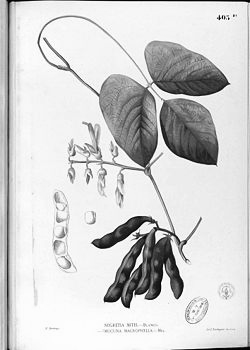Directions:
1. Preheat the oven to 350 F (177 C).
2. Mix together the beef, carrots, onion, potato, peas, parsley, salt and pepper in a large bowl. Set aside.
3. Beat the egg in the small bowl. Set aside.

4. Lay the two pie dough circles out flat. Cut each into thirds. You should have 6 pieces total.
5. Spoon about 1/3 cup of the meat/vegetable mix onto one half of each pie dough piece.
6. Then, rub the edges of the pie dough with the beaten egg. (Use your CLEAN finger, or a brush for this step.)
7. Fold the crust over to form a pocket or dumpling over the top of the meat/vegetable mix. Crimp the edges of the crust with a fork to
seal the pie. You can also use a barbecue brush to "paint" the pasties with the remaining egg to give it more of a shiny/crispy quality when it bakes.
(Note: the store bought pie dough is not as stretchy as home made. Because of this, holes may occur when you fold the dough over. If this is the case, simply pinch the holes together to seal them and/or use less pie filling. If you end up with left over pie-filling you can use it to make breakfast
hash or in soup.)
8. Place the pies on the baking sheet and bake in the oven for about 1 hour and 15 minutes, or until the crust is golden and the meat is cooked through.

Scroll to the bottom for storage directions.
SLOWER, 100% HOME MADE PASTIES:
(Makes 6 pasties - 430 calories per pie)
Tools Needed:
- 3 bowls - 2 large, 1 small.
- sheet pan or cookie sheet
- spoon
- whisk
- fork
- knife or pizza cutter
- rolling pin
- food processor
- oven
Ingredients:
Dough:
- 9 1/2 ounces all-purpose flour (about 2 cups)
- 2 teaspoons baking powder
- 3/4 teaspoon salt
- 2 1/2 ounces shortening (about 6 tablespoons)
- 3/4 cups milk
Filling:
- 8 oz ground beef
- 1/4 cup (1 large) sliced carrot
- 1/4 cup (1 small) chopped onion
 |
| Always weigh ingredients when baking |
- 1/4 cup (1 small) cubed potato
- 1/4 cup cubed rutabaga (substitute sliced parsnip or 1/4 cup peas if you don't like rutabagas)
- 1 egg
- 1/4 cup chopped fresh parsley (and/or a large pinch of chopped fresh rosemary - optional)
- Salt & pepper to taste
(Note:
It is healthier and more eco-friendly if the beef is organic/grass
fed/local, the eggs are organic/free range/local, and the veggies are
organic/local/home-grown - but this is, of course, optional.)
Directions:
Make the dough:
(This dough recipe was created by Alton Brown. Please see: http://www.foodnetwork.com/recipes/alton-brown/pocket-pies-recipe.html)
1. In the bowl of a food processor, combine the flour, baking powder
and salt. Pulse for a few seconds and then pour into a large mixing
bowl.
2. Add the shortening and knead it into the flour with your hands until
it is crumbly.
3. Add the milk all at once and mix in with a spoon or spatula until
it begins to come together.
4. Lightly flour your hands and the counter top
and turn the dough out onto the counter top. Knead the dough ball,
folding over 10 to 20 times.
5. Using a rolling pin roll the dough to 1/3
to 1/2-inch thickness.
6. Cut the dough into sixths.
Assemble & Bake the Pasties:
1. Preheat the oven to 350 F (177 C).
2. Mix together the beef, carrots, onion, potato, peas, parsley, salt and pepper in a large bowl. Set aside.
3. Beat the egg in the small bowl. Set aside.
4. Lay the two pie dough circles out flat. Cut each into thirds. You should have 6 pieces total.
5. Spoon about 1/3 cup of the meat/vegetable mix onto one half of each pie dough piece.
6. Then, rub the edges of the pie dough with the beaten egg. (Use your CLEAN finger, or a brush for this step.)
7.
Fold the crust over to form a pocket or dumpling over the top of the
meat/vegetable
mix. Crimp the edges of the crust with a fork to seal
the pie. You can also use a barbecue brush to "paint" the pasties with the
remaining egg to give it more of a shiny/crispy quality when it bakes.
(Note: the store bought pie
dough is not as stretchy as home made. Because of this, holes may occur
when you fold the dough over. If this is the case, simply pinch the
holes together to seal them and/or use less pie filling. If you end up
with left over pie-filling you can use it to make breakfast hash or in
soup.)
8. Place the pies on the baking sheet and bake in the oven for about 1 hour and 15 minutes, or
until the crust is golden and the meat is cooked through.
Storage options:
These will last for about a week sealed in a zip bag or container in the refrigerator. They can be re-heated via 1-2 minutes in the microwave or the oven for 5-10 minutes.
If you wish to freeze the pasties for later use, you can let them cool, wrap them in plastic wrap, then wrap them again in aluminum foil, place
them in a zipper bag or plastic container and put them in the freezer. Reheat by baking in the oven for about 15-20 minutes at 350F or until heated through. You could also microwave them, but they may become mushy that way.
Possible Variations:
Try substituting different vegetables: Use the same amounts provided in the recipe. Keep in mind, you want to keep this pie fairly dry so that it travels well in your lunchbox. Avoid super- moist veggies such fresh tomato. Celery and
peppers could be used, but in a smaller amount if chopped into smaller pieces rather than large chunks. Try adding the same amounts of other firm root vegetables such as celery root, turnip, sweet potato etc. Firm, starchy, above-ground vegetables such peas, cauliflower, cooked beans, or cooked lentils would work as well. You could even experiment with things like sun-dried tomatoes, mushrooms, peppers or cheese.
For Vegans & Vegetarians: You can substitute a legume mixture, corn/legume mixture or pureed beans for the meat. Try adding cheese. You could skip the egg when sealing the pie and replace it with a bit of soy milk if you are vegan. A couple of recipes can be found here:
Vegetarian Cornish Pasties and
Vegan Cornish Pasties.
Try substituting different meat: A total of any 8oz ground meat, or meat mixture should work in this recipe. You can experiment with flavors.
Try ground pork, lamb, turkey, buffalo, venison etc. A mixture of pork, lamb and beef is traditional for making meatballs and might work. It would also be interesting to substitute pre-cooked pulled pork or smoked meat along with maybe 1T of your favorite barbecue sauce.
If your taste runs to Italian food, Calzones are the Italian version of pocket pie. Basically, you use pizza dough in place of pie crust and fill it with pizza mix. A good recipe for Calzones can be found here:
Jamie Oliver's Calzone Recipe. Remember, you can buy pre-made pizza dough at some groceries and at many mom and pop pizza shops, so you don't necessarily have to make it from scratch.
Make Dessert: You can also stuff pie crust fruit pie mix for a quick desert. Again, be careful to choose a drier mix if you want to eat the pie later or to travel with it. These pies can become mushy over time with a moist filling. Alton Brown also has recipes for mango chutney and chocolate filled pocket pies here:
Alton Brown's Pocket Pie Recipes.
Gluten Free: Gluten free does not work well with this because most gluten free pie
crusts are not stretchy enough to make a pocket. If you happen to discover one that works, please comment below! You could always
fill a gluten free pie crust with the filling and make a non-pocket pie. It would then be more of a pot pie and less of a pasty, though. Sorry gluten free friends! Here is a recipe for gluten-free pie dough:
Martha Stewart's Gluten Free Pie Dough.
EAT AND ENJOY! :)
Have
1 sec.? Please click the “follow” or share buttons (g+, Facebook,
pintrest) to the right of the blog text to share or follow this blog.
Have
2 mins.? Click the “comments” (sometimes it says “no comments”) link at
the bottom of the article and share your own ideas on this topic. I
would LOVE to hear from you!
Have $? Click the donate buttons to the right to help humanity!
Broke? Donate blood to Red Cross. Click the link under the donate section to find out how. Or, click the "Greater Good" link under the donate section. On that site there are "give" buttons that cost you nothing but a glimpse at some advertisements, and still donate to charity. Also, consider donating your time to a local charity this year.
As always, thank you for reading my blog!





















































